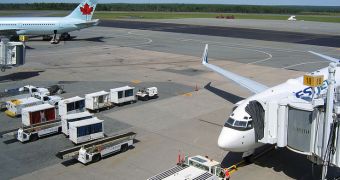Scientists have recently determined that airports pose a much higher health risk to people than initially calculated. In a recent study, it was found that oil droplets jet engines spew on the runway while running idly can be broken up by sunlight into extremely dangerous particles.
These particles are extremely small, and this allows them to penetrate human tissue such as the one in the lungs and brain, causing long-term damage. The effect of sunlight on the oil spilled on tarmacs has never been taken into account before this investigation.
According to the research team that conducted the study, the air around airports is therefore more toxic to breathe than scientists first determined. During this research, the team conducted pollutant measurements directly at tarmac level.
Carnegie Mellon University (CMU) expert Allen Robinson and his group looked at how much oil was spewed by some of the most commonly-used jet engines in the industry. The motors were tested at a variety of load levels, and so the team got the most relevant results possible.
Low engine loads were determined to produce the highest amount of microscopic particles. At higher loads, they most emitted solid particles. The study was conducted by channeling engine exhaust products into a 7-cubic-meter covered Teflon bag.
The contents of the bag were then exposed to sunlight, and the team tracked the reactions that were triggered. These are the same reactions that occur on the tarmac in real-life situations.
When oily micro-droplets began interacting with gases, solid particles were produced within minutes, the investigators say. As such, an engine indirectly produces up to 35 times more particles than the amount measured at its exhaust.
“Driving this chemistry was hydroxyl radical. To create this hydroxyl radical, you need sunlight,” Robinson explains. This chemical plays a critical role in catalyzing the breakdown of oily hydrocarbons, chemists say.
The new result is “unbelievable. It sort of blew our minds. If you’re [airplane] number 46 in line awaiting takeoff, you could spend an hour idling,” Robinson explains, quoted by Science News.
More details of the study appear in the May 5 online issue of the scientific journal Atmospheric Chemistry and Physics.
Studies such as this one are “very important to be clear on how aircraft emissions impact local and regional air quality,” comments Richard Miake-Lye, a researcher at the Billerica, Massachusetts-based Aerodyne Research.

 14 DAY TRIAL //
14 DAY TRIAL //